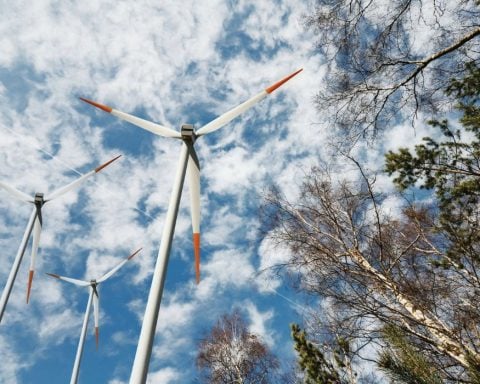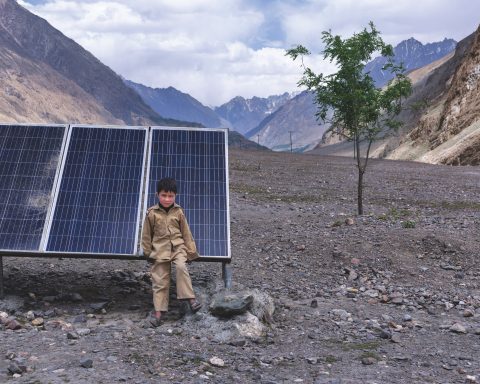It is an unusual experience to read a business book about energy transition that has no data, charts or graphs. But The Investor Visit and Other Stories: Disruption, Denial and Transition in the Energy Business is not your average business book. Canadian economist Peter Tertzakian’s inventive approach to engaging readers about energy disruption and transition over the centuries uses archival accounts of real-world transitions in North America and Europe, brought to life in this book and an interactive online museum of ephemera from our energy history.
At first glance, The Investor Visit looks to be a compilation of 10 distinct stories about individuals whose lives were affected by either prolonged resistance to energy change or the unsettling ethical and human impacts of energy transitions. But it is much more than that. For example, “Nobody Tips a Scandiscope” is not just about atrocious chimney-sweep labour practices in 1850s Britain and the industry’s 75 years of resistance to legislation banning child labour practices. It also offers a tacit reminder that statutory and policy levers do not always bring about intended outcomes, especially when there is no energy alternative and there are few technology solutions to improve it.
In “The Long Road to Saving the Children,” Tertzakian recounts how the practice of using climbing boys would have been replaced by mechanical brushing systems introduced in the early 1800s but other factors conspired to keep the practice alive for another 75 years. The increased use of coal during the industrial revolution and resistance by social groups that enjoyed the slave-master status of owning a “climbing boy” effectively stalled the expected end of child chimney labour. The point Tertzakian is making is relevant today: intended energy transitions can be symbolized by statutes and forward-thinking lawmakers, but the actual practice and inculcation of those changes may face headwinds if multiple and complex conditions exist to delay or prevent change.
The enduring subtlety of the book helps show how the lessons of past disruptions have distinct parallels with today’s energy transition challenges. Take, for instance, the chapter called “The Great Aha” and its (true) story of Ed Tucker, a stagecoach operator in the Windsor, Ontario, area in 1914. Flatly denying the benefits of the nascent automobile, he says, “Horses have been moving humans since the time of the Romans, nothing is going to change!” That is, until he tries out a Ford Model T and discovers for himself the compelling benefits of car versus horse-drawn transportation. The initial lesson of Ed Tucker’s great aha moment is in understanding how much human psychology is involved in making choices between existing and entrenched ways of doing things, i.e. horses versus cars.
But more than that is the question Tertzakian raises about why modern-day adoption of electric vehicles is taking longer than forecasted. The benefits of an automobile to Ed Tucker went far beyond improvements in transit speed and personal experience to include self-reliance, personal freedom and a huge financial gain: owning a Model T car was significantly cheaper than running a stagecoach operation, horses and all. Without revealing all, Tertzakian’s story of Ed Tucker’s initial resistance provides insight into why e-vehicle adoption is stalling.
Likewise in the chapter “Long Way Around,” the absurd account of the voyages of the MS Kimon oil tanker, which, during the Arab oil embargo of the 1970s, transported millions of barrels of Canadian oil through the Panama Canal from Vancouver to Montreal. Tertzakian’s narrative suggests the lesson here is much more than crisis management capacity; it’s about how rigorous scenario planning can mitigate against geopolitical fallout.
The Investor Visit is a departure from Tertzakian’s approach in A Thousand Barrels a Second (2006) and The End of Energy Obesity (2009). As he explains, he started writing The Investor Visit when he began collecting energy curiosities in his travels. His account of discovering charcoal irons in a Peruvian antiquities store is reminiscent of the research approach a cultural anthropologist might follow: first, discover and identify the cultural artifact; and second, work backward to examine the probable social context of the artifact.
According to Tertzakian, a self-described energyphile, “I wanted to use these stories as a foundation to talk about the current situation we face in energy transition. As the world is transitioning to new energy forms, what are the business lessons we can learn from the past?”
Those lessons could have quite easily been imparted in a dry, conventional business book, but Tertzakian makes the experience lively and provocative, if not altogether deeply engaging.
The book and the companion online museum are viewable at energyphile.org.
Anna Dowbiggin is a business professor at the University of Guelph-Humber with a research interest in climate risk management in the energy sector.
(Disclaimer: Dr. Dowbiggin received no funding support for this review.)





